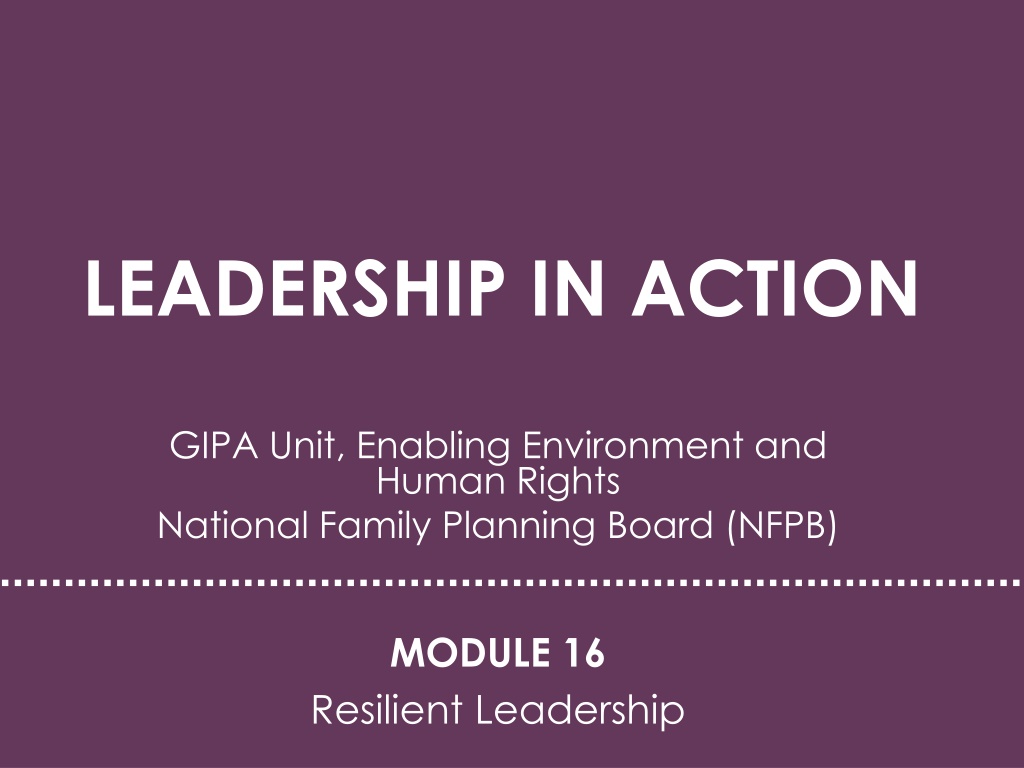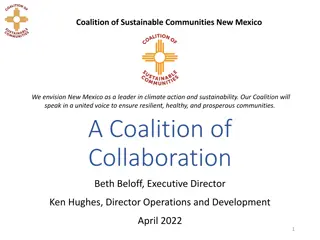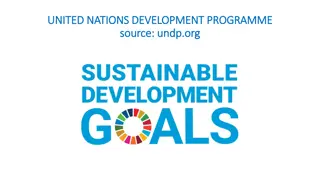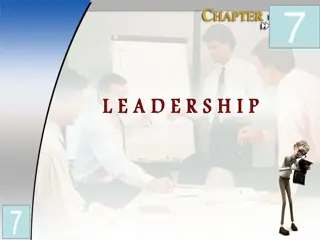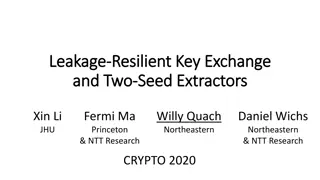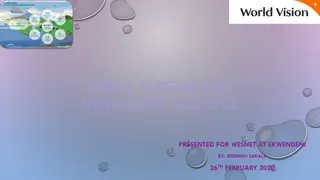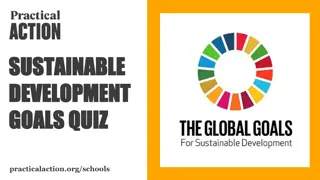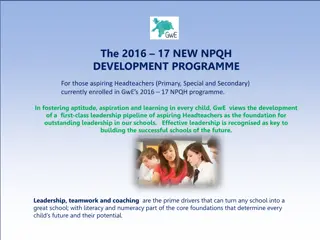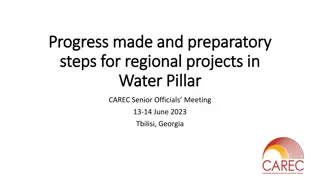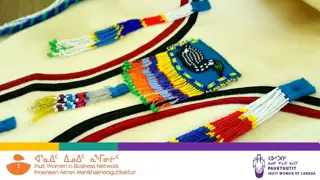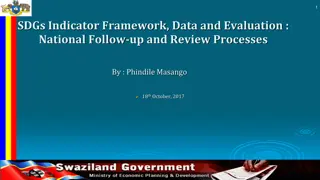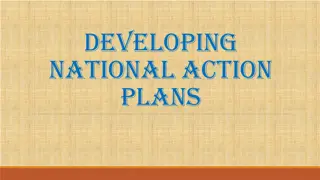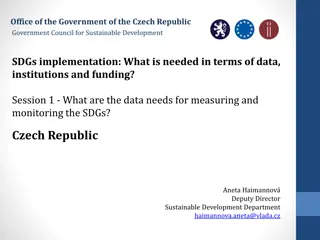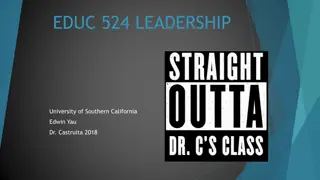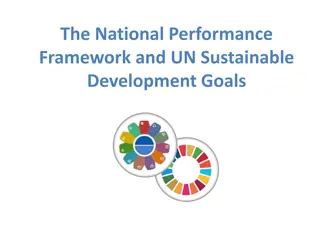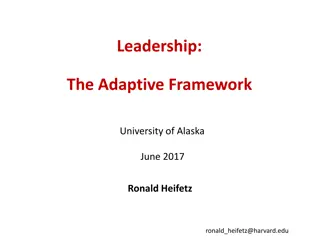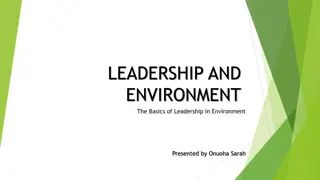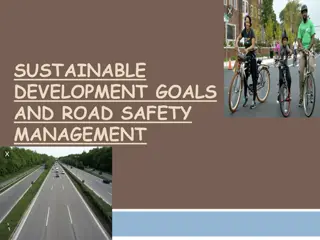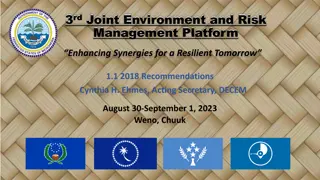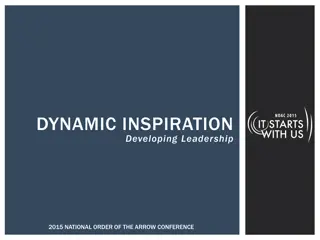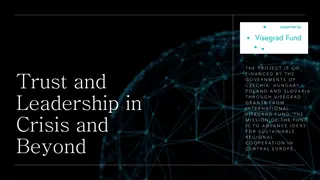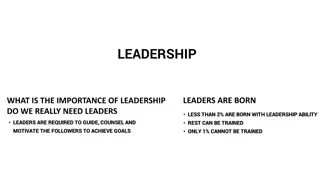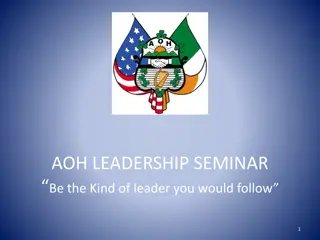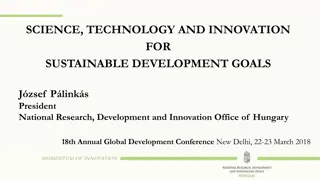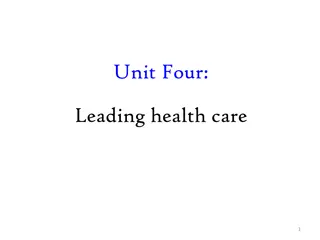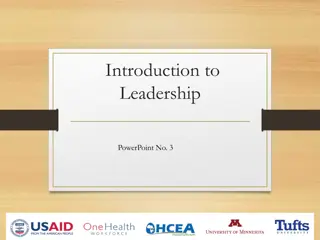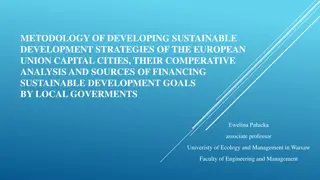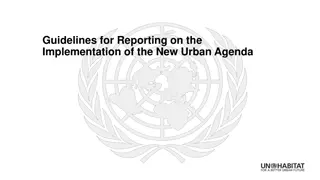Sustainable Development Goals and Resilient Leadership in Action
The Sustainable Development Goals (SDGs) were adopted in 2015 as an intergovernmental set of goals with 169 targets to address various global challenges such as poverty, hunger, health, education, gender equality, clean energy, and more. This module emphasizes the importance of resilient leadership in achieving these goals and creating an enabling environment for human rights and sustainable development.
Download Presentation

Please find below an Image/Link to download the presentation.
The content on the website is provided AS IS for your information and personal use only. It may not be sold, licensed, or shared on other websites without obtaining consent from the author. Download presentation by click this link. If you encounter any issues during the download, it is possible that the publisher has removed the file from their server.
E N D
Presentation Transcript
LEADERSHIP IN ACTION GIPA Unit, Enabling Environment and Human Rights National Family Planning Board (NFPB) MODULE 16 Resilient Leadership
Development Goals The Millennium Development Goals (MDGs) started in 2000 as the world's time-bound and quantified targets for addressing extreme poverty, hunger, diseases, lack of adequate shelter, and exclusion- while promoting gender equality, education, and environmental sustainability. The Post-2015 Development Agenda refers to an intermediary process, is led by the United Nations and aims to help define the future global development framework that will succeed the Millennium Development Goals. The Sustainable Development Goals (SDGs) were adopted in September 2015 and are known officially as Transforming our world: the 2030 Agenda for Sustainable Development. They are an intergovernmental set of aspiration goals with 169 associated targets.
Symbol for Sustainable Development Goal 1: No Poverty. The Official Agenda for Sustainable Development, adopted on 25 September 2015, has 92 paragraphs. The main paragraph (51) outlines the 17 Sustainable Development Goals and their associated 169 targets. This included the following goals:[19] Symbol for Sustainable Development Goal 2: Zero Hunger No Poverty - End poverty in all its forms everywhere[20] Targets. Zero Hunger - End hunger, achieve food security and improved nutrition and promote sustainable agriculture[21] Targets. Symbol for Sustainable Development Goal 3: Good Health and Well-Being Good Health and Well-being - Ensure healthy lives and promote well-being for all at all ages[22] Targets. Symbol for Sustainable Development Goal 4: Quality Education. Quality Education - Ensure inclusive and equitable quality education and promote lifelong learning opportunities for all[23] Targets.
Symbol for Sustainable Development Goal 5: Gender Equality. Gender Equality - Achieve gender equality and empower all women and girls[24] Targets. Symbol for Sustainable Development Goal 6: Clean water and sanitation. Clean Water and Sanitation - Ensure availability and sustainable management of water and sanitation for all[25] Targets. Affordable and Clean Energy - Ensure access to affordable, reliable, sustainable and clean energy for all[26] Targets. Symbol for Sustainable Development Goal 7: Affordable and clean energy. Decent Work and Economic Growth - Promote sustained, inclusive and sustainable economic growth, full and productive employment and decent work for all[27] Targets. Symbol for Sustainable Development Goal 8: Decent work and economic growth.
Symbol for Sustainable Development Goal 9: Industry, innovation and infrastructure. Industry, Innovation and Infrastructure - Build resilient infrastructure, promote inclusive and sustainable industrialization and foster innovation[28] Targets. Symbol for Sustainable Development Goal 10: Reduced inequalities. Reduced Inequalities - Reduce inequality within and among countries[29] Targets. Sustainable Cities and Communities - Make cities and human settlements inclusive, safe, resilient and sustainable[30] Targets. Symbol for Sustainable Development Goal 11: Sustainable cities and communities. Responsible Consumption and Production - Ensure sustainable consumption and production patterns[31] Targets. Symbol for Sustainable Development Goal 12: Responsible consumption and production.
Symbol for Sustainable Development Goal 13: Climate Action. Climate Action - Take urgent action to combat climate change and its impacts[32] Targets. Life Below Water - Conserve and sustainably use the oceans, seas and marine resources for sustainable development[33] Targets. Symbol for Sustainable Development Goal 14: Life below water. Life on Land - Protect, restore and promote sustainable use of terrestrial ecosystems, sustainably manage forests, combat desertification, and halt and reverse land degradation and halt biodiversity loss[34] Targets. Symbol for Sustainable Development Goal 15: Life on land. Peace, Justice, and Strong Institutions - Promote peaceful and inclusive societies for sustainable development, provide access to justice for all and build effective, accountable and inclusive institutions at all levels[35] Targets. Symbol for Sustainable Development Goal 16: Peace, justice and strong institutions. Partnerships for the Goals - Strengthen the means of implementation and revitalize the global partnership for sustainable development[36] Targets. Symbol for Sustainable Development Goal 17: Partnerships for the goals.
Identifying HIV targets in MDGs 2015 was a crucial year for the HIV response and the global development agenda It signalled the end of the MDGs and the achievement of MDG Goal 6: Combat HIV and AIDS, malaria, and other diseases: First time a global health target had been met and exceeded. By mid-2015, the number of people accessing antiretroviral therapy (ART) reached nearly 16 million double the number on ART just five years earlier.
2015 also ushered in the SDGs: Goal 3 is an overarching goal on health issues. It seeks to ensure healthy lives and promote wellbeing for all at all ages. Target 3.3 states, By 2030, end the epidemics of AIDS, tuberculosis, malaria and neglected tropical diseases and combat hepatitis, water-borne diseases, and other communicable diseases.
ENDING THE AIDS EPIDEMIC IS A CRUCIAL PART OF ACHIEVING THE SUSTAINABLE DEVELOPMENT GOALS. THE 2016 UNITED NATIONS GENERAL ASSEMBLY HIGH- LEVEL MEETING ON ENDING AIDS CAN HELP CLOSE THE GAP BETWEEN NEEDS AND SERVICES AND ADVANCE OUR EFFORTS TO LEAVE NO ONE BEHIND. Ban Ki-Moon Secretary-General of the United Nations
Way forward for the Global, regional, and national context
The UNAIDS Fast-track Approach The UNAIDS Fast-track approach aims to achieve ambitious targets by 2020, including: Fewer than 500,000 people newly infected with HIV. Fewer than 500,000 people dying from AIDS-related illnesses. Eliminating HIV-related discrimination. An ambitious treatment target to help end the AIDS epidemic known as 90 90 90: By 2020, 90% of all people living with HIV will know their HIV status. By 2020, 90% of all people with diagnosed HIV infection will receive sustained ARV therapy. By 2020, 90% of all people receiving ART will have viral suppression.
Local Dynamic New Priorities New Challenges Stock-outs ARVs, family planning methods Staff tenure PHDP: Test and treat Treatment as prevention Gender-based violence Centre for Social Sciences for GIPA Psycho-social programme (e.g., support groups)
What can you do? NOW is our opportunity to make our voices heard for the people we represent
"Now is the time to come together again and finish what we started. Let us seize this opportunity and join the Fast-Track towards ending AIDS as a public health threat by 2030." Michel Sidib UNAIDS Executive Director
People Living with HIV: Vulnerable, key, & marginalised
